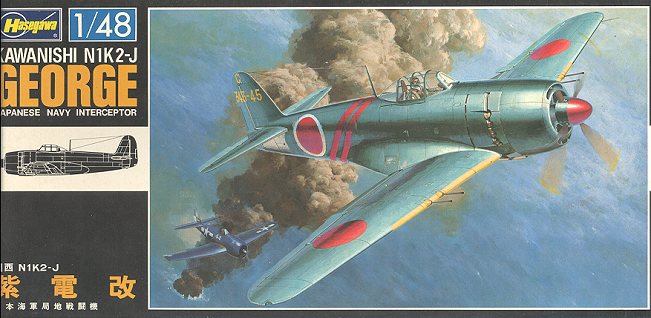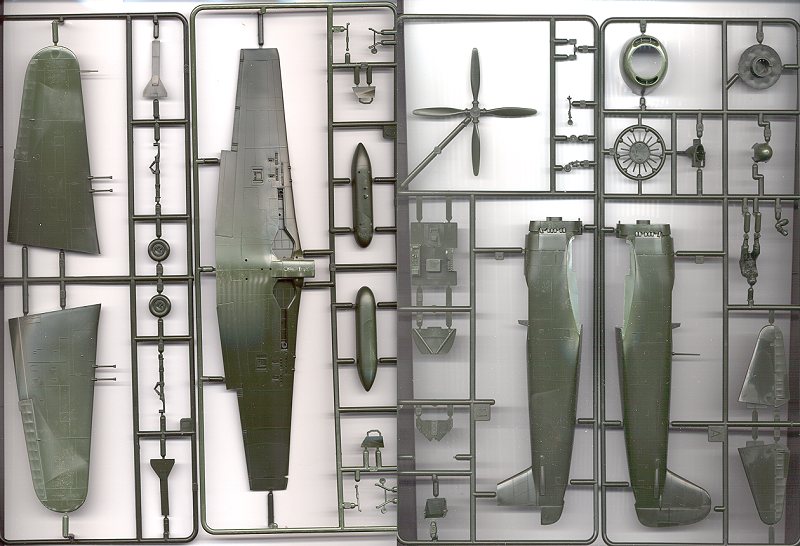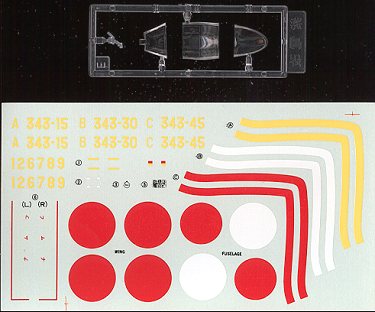
|
KIT: |
Hasegawa 1/48 N1K2-J 'George' |
|
KIT # |
U-002 |
|
PRICE: |
$7.50 (way back when) |
|
DECALS: |
three aircraft |
|
REVIEW & |
|
|
NOTES: |
An ex-Mania molding |

|
HISTORY |
The Kawanishi N1K2-J Shiden Kai is probably unique in the annals of aviation history. It is the only fighter aircraft I can think of that was originally built and flown as a floatplane! The Shiden Kai originally started life as the N1K1, a very swoopy-looking and relatively fast floatplane fighter. Unfortunately, the need for such an aircraft was gone by the time that it became operational. The speed of the aircraft was not lost on the Naval planners, who then directed Kawanishi to make a land plane version of it.
The result was the mid-winged N1K1-J. This aircraft was quick, but was burdened by being overly complicated and harnessed to a rather unreliable Nakajima 1,900 hp Homare engine. Though over 1,000 of the N1K1-J version were eventually made, Kawanishi was directed to make a simplified version. This resulted in a low-winged aircraft, the N1K2-J Kai, an aircraft with 23,000 fewer parts than the earlier aircraft and the subject of this kit. It was still saddled with the unreliable Homare engine, but when the aircraft was working well, it was a very formidable foe and the outcome of combat with US planes was determined by the skill of the pilot. It was also the final production fighter made for the Japanese Navy. There is a surviving example of this aircraft with the USAF collection at Dayton, Ohio.
|
THE KIT |

I guess that talking about how old the molds are is the first place to start. In fact, this is another old Mania kit, like the Ki-27 and F4U-4 in this scale. Then I can tell you that it is really hard to believe that it is of that age. Yes, the panel lines are engraved. Yes, the wheel wells are a bit shallow and don't have the detail of modern kits. And it is true that the cockpit, while very well detailed for the time is a bit sparse by today's standards. I can also say that few of you reading this will ever build this kit. Why? well, last month, Hasegawa released a brand new mold of this kit will all the year 2000 goodies.
However, there are some of you who will be more willing to build this less expensive version, despite the fact that there is a newer kit on the market. This particular kit does not have a plethora of parts. It has a decent engine and well molded cowling. The canopy is in three parts so can be displayed open. There are aftermarket parts for it as well as decals. The parts are crisp and pretty well flash-free. There are a few ejector pin marks that are not in the best place, but none that should give you any problems.
Instructions for this kit were by Minicraft and in English. There are eight construction steps and color callouts are given in each step. Camo scheme is given in FS numbers. An interesting notation is that the inside of the gear doors is supposed to be painted black, which implies the same for the wheel wells. Not sure about that one so check what references you have for more info on that bit.
 Decals are
typical of Hasegawa in that they are a bit thick and glossy. There are three
aircraft given, all from the 343rd wing. The only real difference is the color
of the fuselage bands. One is in red, one white and one yellow. The tail codes
are different as well. Frankly, there are much better decals in aftermarket
sheets, though the kit ones will work well. All aircraft are very dark green
over light grey
Decals are
typical of Hasegawa in that they are a bit thick and glossy. There are three
aircraft given, all from the 343rd wing. The only real difference is the color
of the fuselage bands. One is in red, one white and one yellow. The tail codes
are different as well. Frankly, there are much better decals in aftermarket
sheets, though the kit ones will work well. All aircraft are very dark green
over light grey
Overall it shouldn't be that difficult to build and will definitely look very nice. You can also congratulate yourself on not having paid $25 for it!!
|
REFERENCES |
Japanese Aircraft of the Pacific War by Rene J. Francillon, 1979
Review kit courtesy of me and my wallet!
If you would like your product reviewed fairly and quickly by a site that has over 1,100 visits a day, please contact me or see other details in the Note to Contributors.